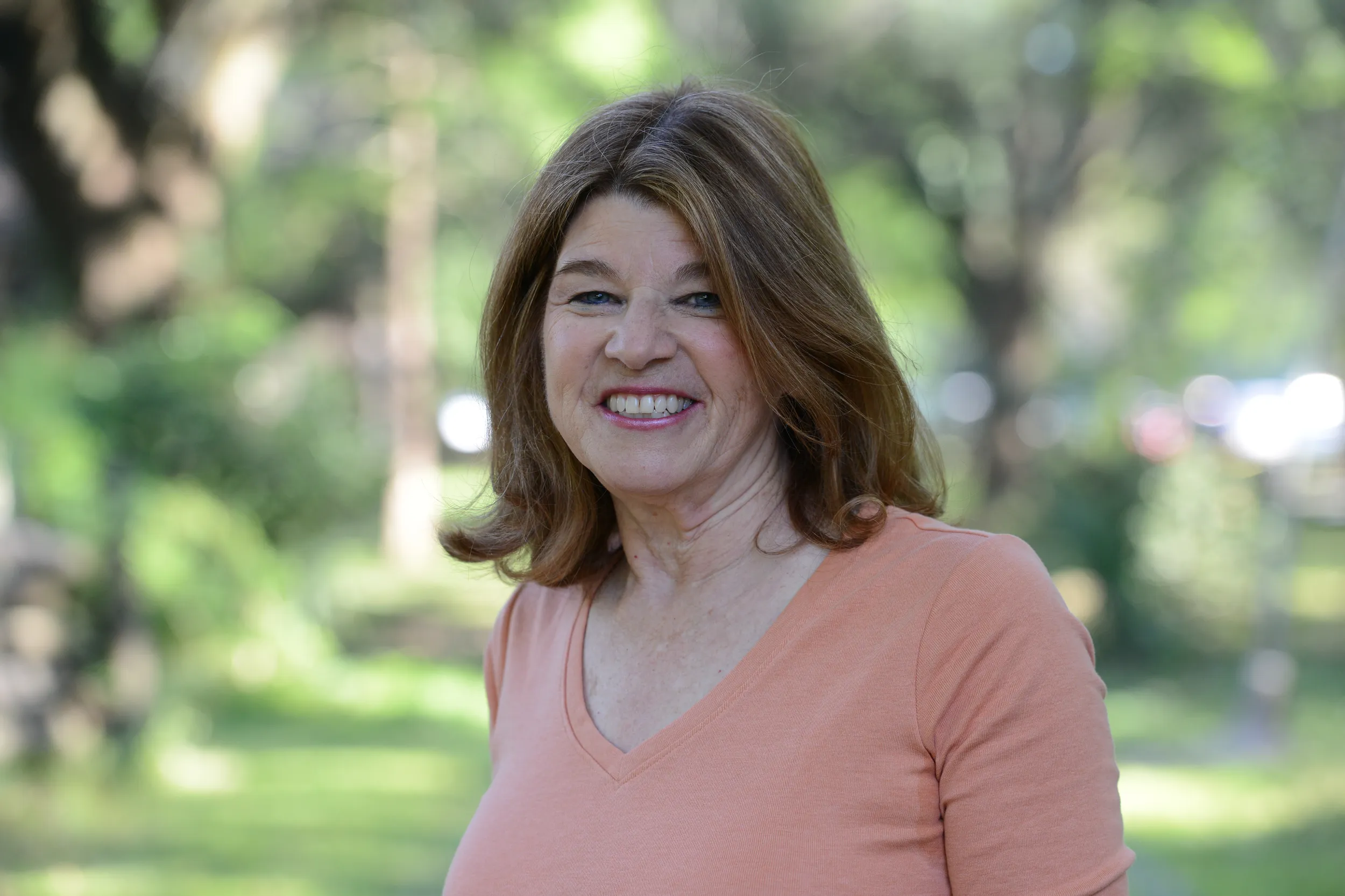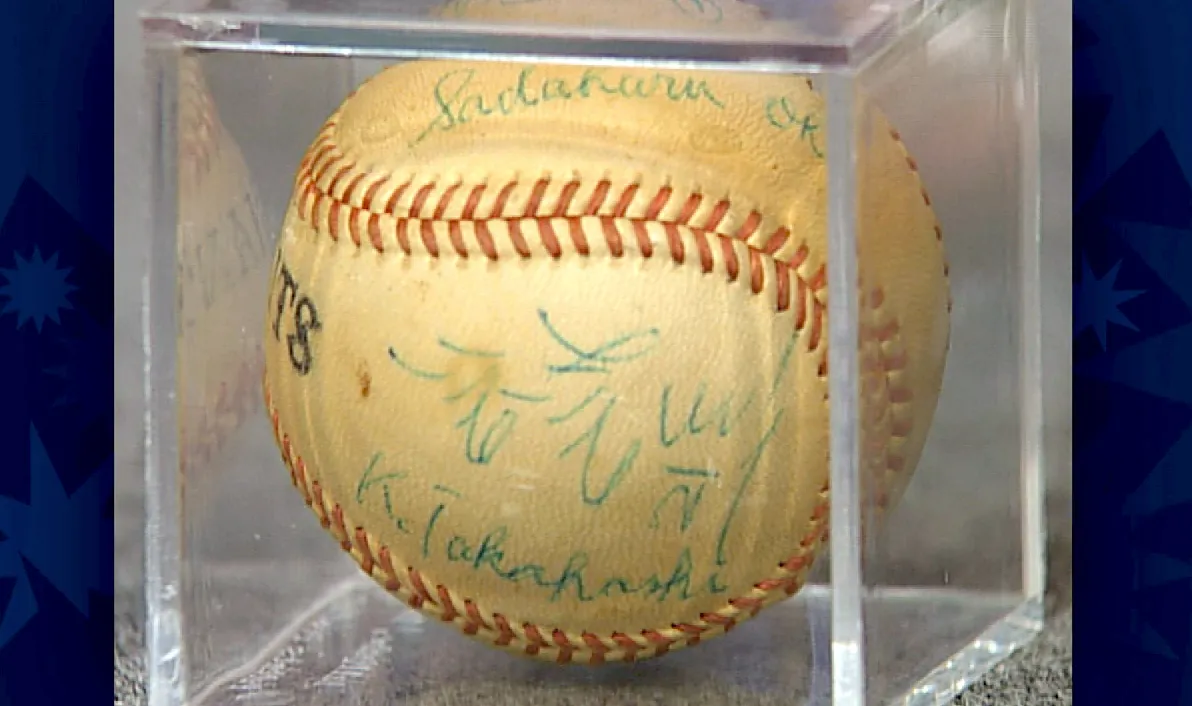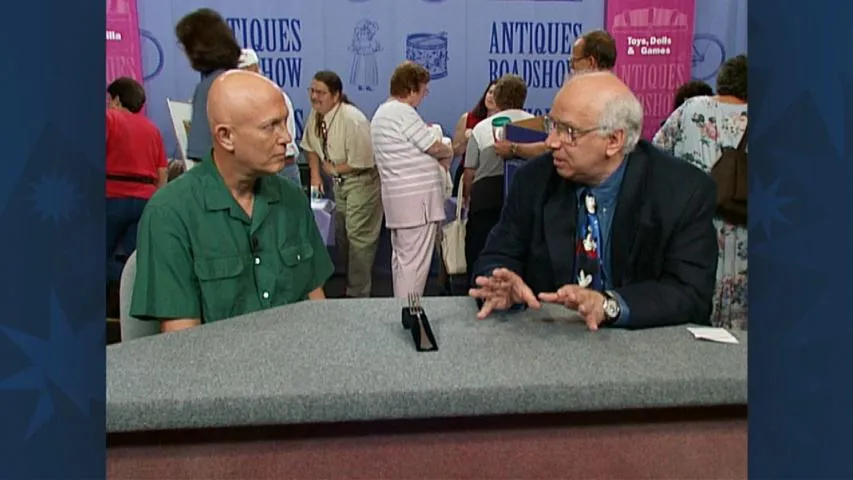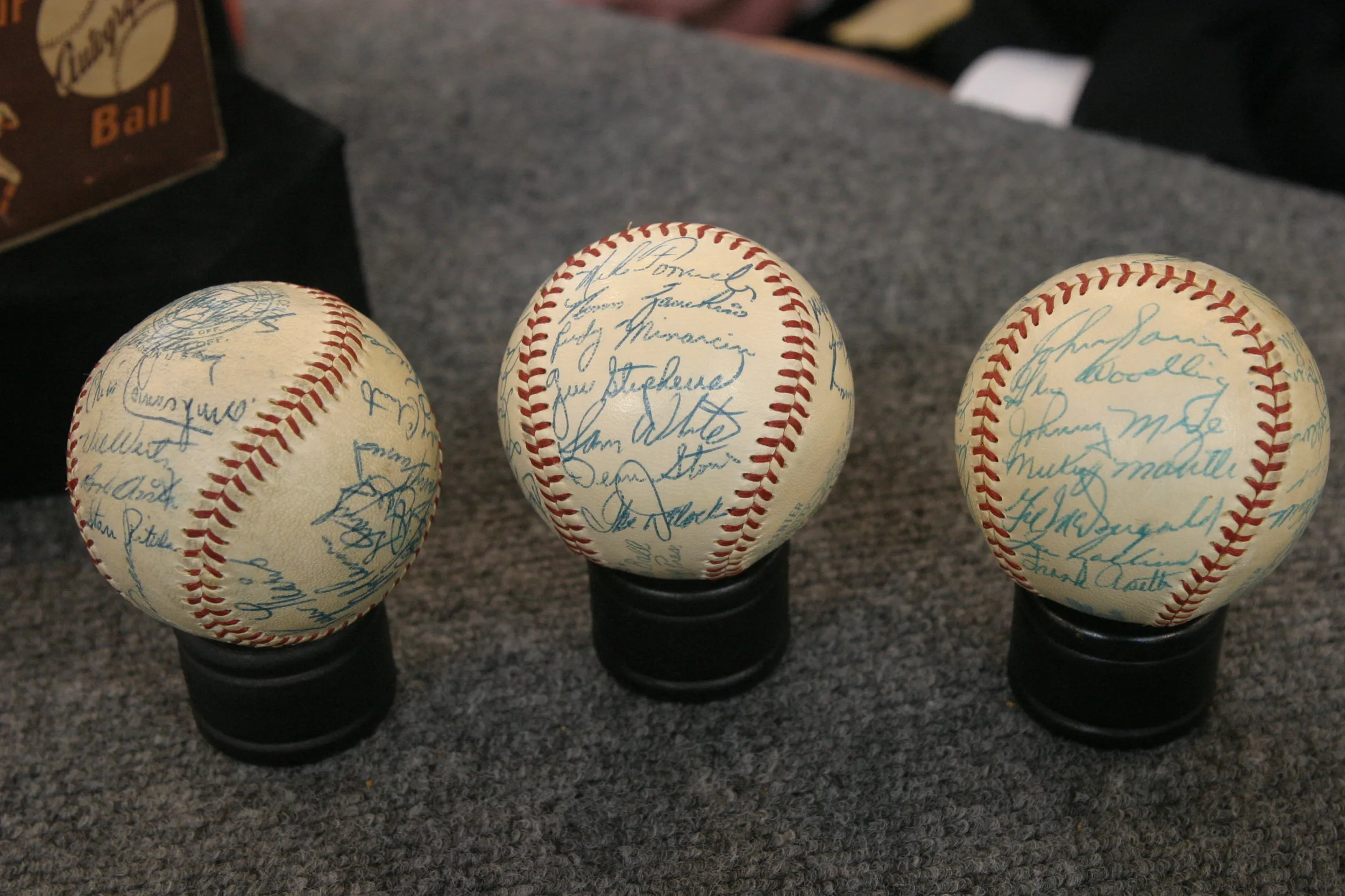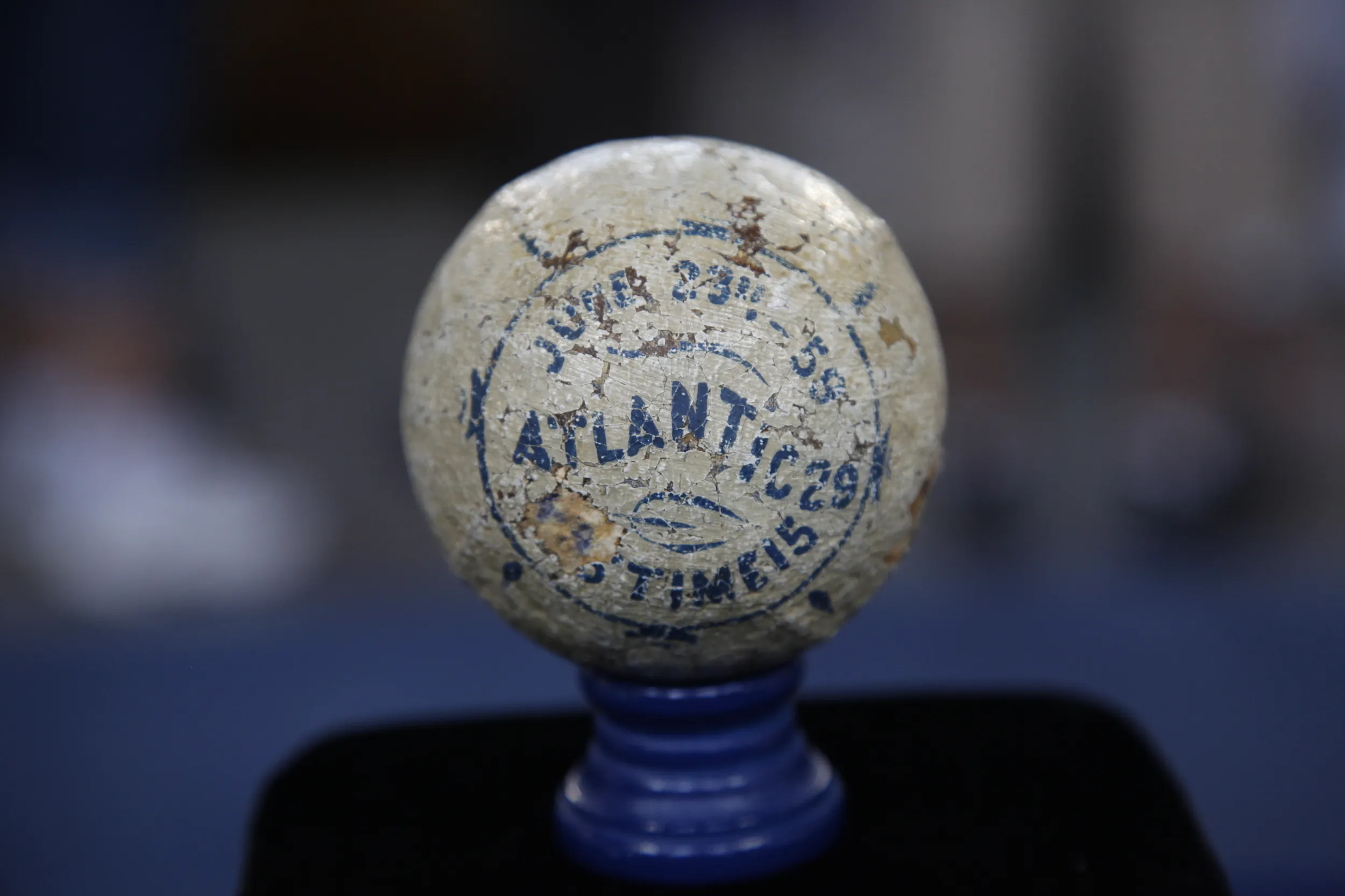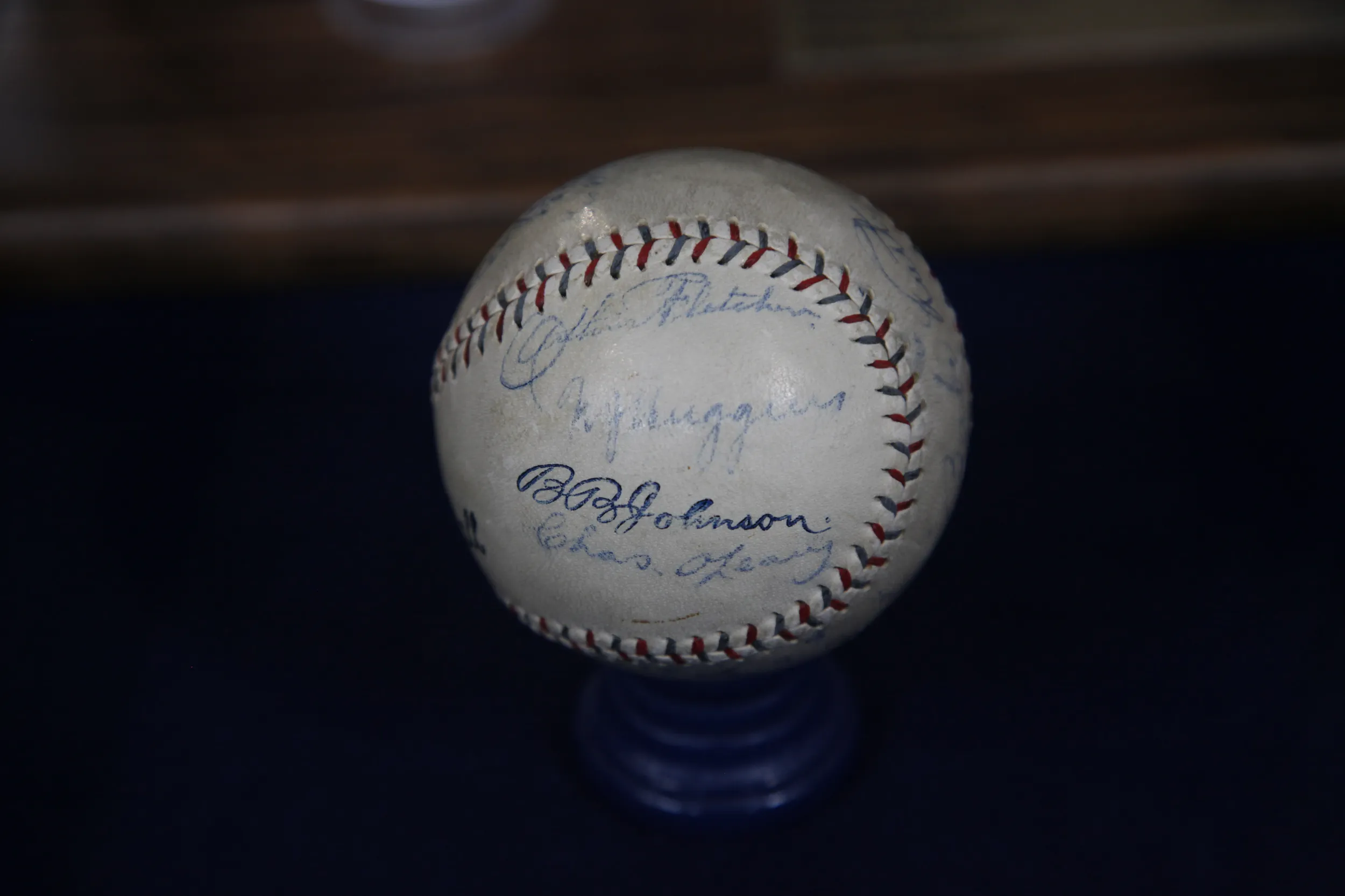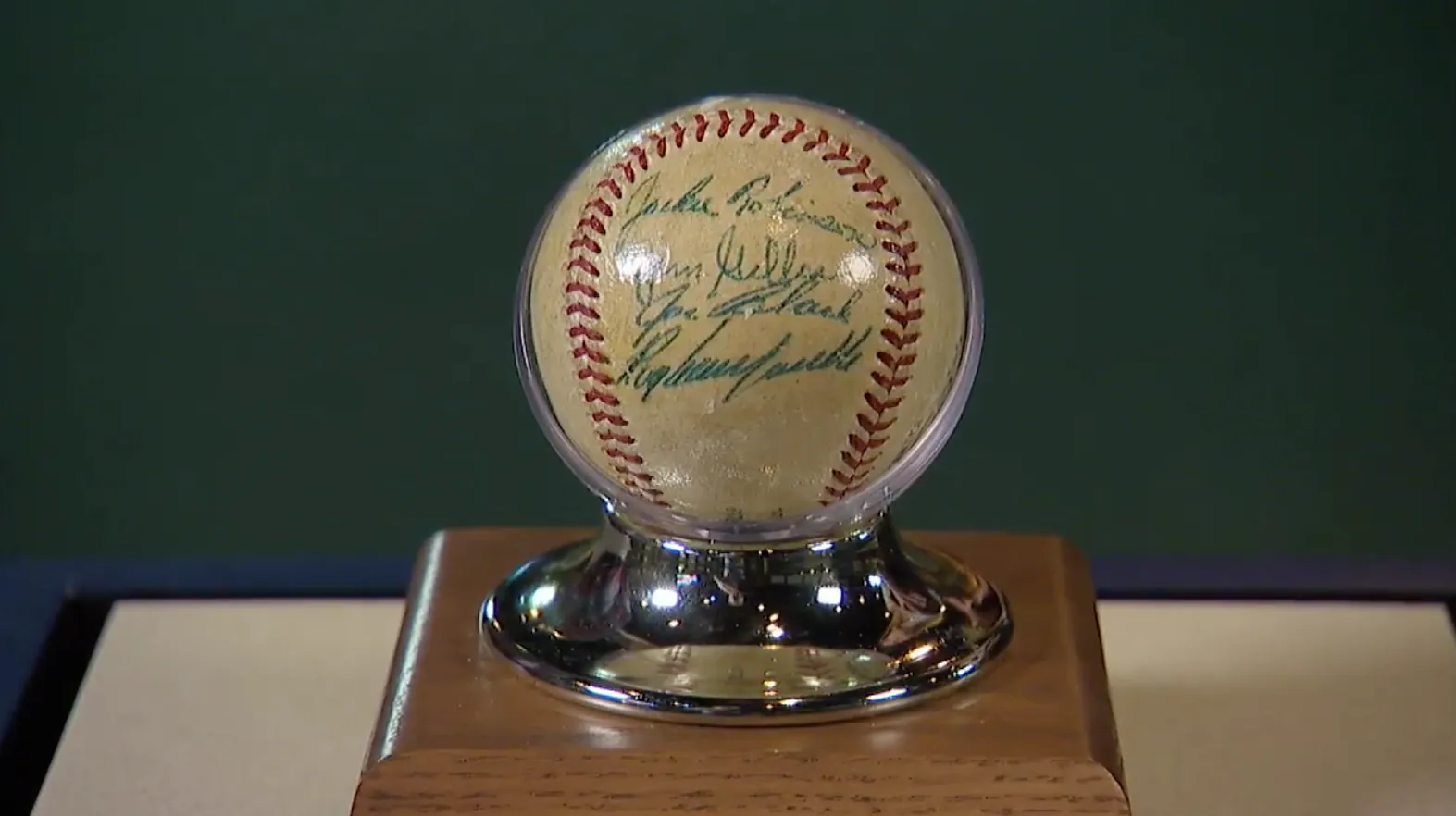GUEST: This is my husband's collection, and so I'm his emissary today.
APPRAISER: Why is your husband such a baseball fan?
GUEST: He grew up playing baseball and he ended up playing professional baseball for a while. He played for six years, and then when he didn't make it to the big leagues, then he decided he better get a job and work for a living.
APPRAISER: So what era are we talking about?
GUEST: David played in the mid-'60s, early '70s.
APPRAISER: Okay. So what connection does he have to these pieces?
GUEST: This first baseball was given to him by his uncle. And when he went to a Washington Senators- New York Yankees game, he got Babe Ruth's signature.
APPRAISER: Wow.
GUEST: When he got Babe Ruth's signature, Lefty Grove happened to be there at the time, and apparently his Uncle Bill asked for his signature as well, but Lefty didn't give autographs. And when Babe Ruth heard that, he started giving Lefty a hard time, saying that he should placate the fans and be more gracious, and so he got both autographs on the baseball.
APPRAISER: Well, that makes a lot of sense. Babe Ruth really brought about the great first era of signing baseballs. But this one's much later.
GUEST: Well, this one, my husband was with the Dodgers and one summer, the Tokyo Giants professional baseball team came and they participated in spring training with the L.A. Dodgers.
APPRAISER: Okay.
GUEST: And the men on both teams exchanged paraphernalia-- you know, "I give you my hat, you give me yours"-- and this baseball was one of their official baseballs. That's why the color is a bit different. And it was signed by two famous Japanese players. The first is Sadaharu Oh.
APPRAISER: That's right, in the Japanese league.
GUEST: And the second one is K. Takahashi. He was a pitcher like my husband.
APPRAISER: So we've got two balls down. We've got one piece still left: this very innocent-looking piece of paper. Tell me about this.
GUEST: Well, I think that's the most special piece. My husband, as I said, was a pitcher, and when he was issued his pitching jacket this particular season, he put his hand in the pocket and there was this crumpled piece of paper in it. And when he opened it up, he realized what it was. Don Drysdale had been the pitcher for the L.A. Dodgers that previous season when they had won the world championship, and this was the scouting notes that told him how to pitch to each of the people in the Minnesota lineup.
APPRAISER: Wow. This was written in the Hotel St. Paul in Minnesota. Well, the 1965 World Series was decided in seven games. We've got Don Drysdale, who was 23 and 12 that year, 209 wins in his total lifetime, and he's sitting down and he's taking on Harmon Killebrew, who is a Hall of Fame hitter, and he's saying, "Fastball, in and tight." He's got Tony Oliva in here, who was one of the greatest hitters, who won several batting titles. It's amazing. He's got the catcher, Jerry Zimmerman, who batted zero against him, so obviously he did very well. The Babe Ruth and Lefty Grove ball-- very, very important ball to have both those signatures on it and in great condition. Value-wise, probably somewhere in the $2,500 to $3,500 range and maybe even more. The Sadaharu Oh, Takahashi baseball, probably about $200 to $400. But this piece of paper, if this was an ordinary pitcher in an ordinary game in an ordinary year, it wouldn't be worth very much, but because you have a Hall of Fame pitcher in the 1965 World Series that they won taking notes on the opposing team, I can see a collector paying in an auction somewhere between $1,000 and $1,500 anyway. So I think the moral of the story is always check your pockets. (laughing)
